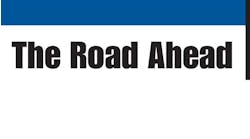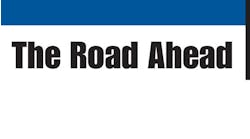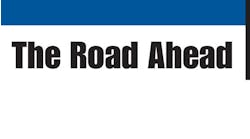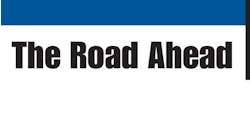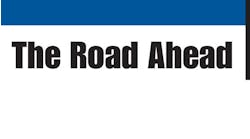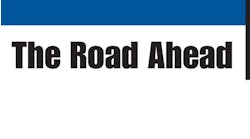A VALUE-ADDED sales professional must adjust previous modes of thinking and come up with solutions to problems, because customers will pay higher prices for solution to problems.
According to Tom Easton in his value-added presentation at the Heavy Duty Aftermarket Week, customers will pay a premium, establish a closer relationship with a sales professional, and establish barriers of entry for the company's competition if the professional:
-
Reveals an unrecognized problem that the customer is experiencing.
-
Creates or reveals an unseen opportunity for the customer.
-
Develops an unanticipated solution to address the customer's problem or exploits the customer's opportunities.
-
Serves as a “broker of capabilities,” not just a vendor of heavy-duty parts, products, and services. The professional makes available to the customer the full capabilities of the company.
“Each of these value-added solutions requires specific tactical skill execution,” said Easton, a former member of the board of trustees for the Automotive Service Association Management Institute who has presented over 1000 speeches, seminars, and workshops for small business owners, warehouse distributors, suppliers, and manufacturers. “Experienced heavy-duty aftermarket sales people can master these skills and successfully create value where the competition fails.”
He said there are important questions to consider while preparing for a value-added sales visit:
-
What is my call objective?
-
What do I hope to accomplish?
-
What opening statement will I use?
-
What questions will I ask?
-
What kind of resistance is the customer likely to present, and how will I deal with that resistance?
He said a successful strategy requires preparation, execution, and a post-call review:
-
Think, plan and execute more strategically.
-
Plan, execute, and review the value-added sales call.
-
Build your confidence and your competence.
-
Hold the line on your prices.
-
Explore what the customer really wants in a solution.
-
Listen to the customer.
-
Validate you understand their problems and challenges.
-
Offer a possible solution.
-
Offer proof of performance and prove the value.
“If you win on price, you will lose on price,” he said, “because in the heavy-duty industry, just like in technology, there are some crazy people. I want you to win big, adding value to your customer's business. You have to win on something different.”
The coaching keys
He said coaching a sales person for value-added selling involves:
- Preparation
“Achieve the right attitude (it's not about me/us - it is customer-centered). Gather customer information (market intelligence). Devise value-added questions. Practice the value-added sales call (live with peers and mentally rehearse the call). Do a final review before the call (objectives, latest intelligence, latest product knowledge, testimonials of your service or product, structured questions, contingencies, roles, responsibilities. What will be an acceptable next step?)
- Execution
“Situational Awareness: Know your customer's business and what is going on currently. Ask questions based upon your research and knowledge and then listen to the responses. Learning to continually adapt to your sales environment as it changes with every customer and every customer's current challenges. Record of call: You have to document what you are learning, pen and paper show you are listening and care. You will need this information to refer to next time you make your call to follow-up on this issue with this customer. Then get agreement to go to the next step: Close or no close. What is the chance of a win? What would have to happen for the win to happen?”
- After the call
“Replay the call. What worked? What didn't work? What did I do well? What could I have done better? What lessons did I learn? Review the positive and negative events that took place. Why did this sales call develop and proceed the way it did? This is part of your personal continual value-added sales improvement process.
Follow-up and follow through. Do whatever you promised the customer. Send articles, take a new catalog by, crunch some numbers - do whatever you promised. Keep your focus on this customer.”
He said margin erosion has to be stopped by becoming a strategic partner of the customer.
In the first stage, a relationship is built and the customer says, “I like you. I like your company.”
Then the customer becomes truly interested in operations and current business processes and says, “I respect you and value your business knowledge.”
Then the customer shares operational and business goals, saying, “I trust you and value your input and opinions.”
Finally, the focus is on personal and business goal attainment, with the customer saying, “I need you and value your total contribution to my life and company.”
“This is when they pay you more than they pay the competitor,” Easton said. “Our research has found that they'll pay 3% more for a commodity from a value-added sales organization.”
Breaking down ISP
Easton gave his value-added selling ISP:
- I = Individual Attitude
“The right attitude comes from a commitment to learn new skills and a commitment to preparation. The value-added attitude and confidence are a by-product of training, market and customer knowledge, and practice. The value-added HD parts sales person must know the customers and the competition, and understand they are laying the groundwork for future success and sales growth, through the integration of these new skills into their already strong sales skill set.”
- S = Situational Awareness
“You must increase your understanding of the customer and the customer's business, the customer's industry, even the impact the economy can have on your customer's business. You have to understand your competition and their products and services. What is the competitive situation? In addition, you have to be aware of your own company's situation for providing and bringing solutions to help your customer be successful. You must be a broker of capabilities.”
- P = Promise, Performance, and Proof
Value-added selling is not about the sales person, or your company, or your company's culture. It is not about your products or services. Value-added selling is about your customer's success and goal achievement. In value-added selling, you commit to making your customer successful. You put the customer's business and success ahead of your personal goals. You are committed to do whatever it takes for them to win and be successful. You must be totally committed to follow-up and follow through on research and ideas for your customer's business. You must develop methods, even forms, to validate and offer quantitative proof of the value your company contributed to the customer's business.”
He said the sales person has to understand the revenue wellhead, which is “the customer — where we find the cash. We want to find where the cash comes from. A heavy-duty distribution facility is not a direct wellhead for a manufacturer. It's the person who throws the box away (the end user).”
He said the revenue oil fields are B2O (business to owner of the vehicle or equipment, over the counter or in your shop), B2B (business to business, repair shop), B2F (business to fleet) and B2C (business to competition, vehicle/equipment dealership).
He said these four revenue fields represent a different gross-profit percentage. Each of the four revenue fields has different needs and expectations. Within each revenue field, revenue wellheads (customers) represent different gross profits and gross-profit percentages. Each revenue wellhead has different buying processes. The sales rep is required to sell differently to each revenue wellhead.
“Information and more information is required about each revenue wellhead account,” he said. “Perhaps more than any industry we've seen, you need a lot of information about revenue wellheads. It is not like pantyhose — one size fits all. There is a difference in each customer's requirements. The sales person has to sell differently to each one of the customers.”
Information needed
He said the minimum information to know is the company name, address, phone number, credit limit, and status.
The critical information: Do they do their own work? Is a PO required? Is there an equipment inventory list? What business are they in?
The information that is important to know: How long have they been in business? Who is their current supplier? How often do they want to be called on? Do they have the potential to be a good customer?
The information that is valuable to know: How long do they keep vehicles in service?
The information that is useful to know: What is their opinion of your product? What else can you sell to them? What time and day should they be called on?
The information that is nice to know: personal information.
“How do you determine an account's potential?” he said. “How many vehicles do they have? How many miles do those vehicles do? How do we determine our account's penetration? What we found in our research was just historical sales reports. And I think you're all on an ego trip, because in the data we saw, you called them sales reports. But in a value-added selling environment, those are the purchase reports of your customers. That's what they bought from you. I'm not sure you sold.
“They know you have good dealers and they call you because you deliver quickly. They bought from you. But we didn't find anybody in our research who told what the account potential was. Are your accounts spending above or below that national average? Value-added selling is understanding the customer's business — understanding who the customer's competitors are.
“And it's all built on relationships. You know what the value of relationship selling is in round numbers? If they have a great relationship and they're not buying, the value of the relationship in round numbers is zero. If you're helping them with their business, then the relationship has some value.”
He said when it comes to customer service, what the customer perceives is their reality.
“You think you have friendly people behind your counter — that's your reality,” he said. “You think Coffee Charlie is a good outside salesman — that's your reality. What do your customers think of Coffee Charlie? It's dangerous to operate without understanding what the customer perceives of reality.”
